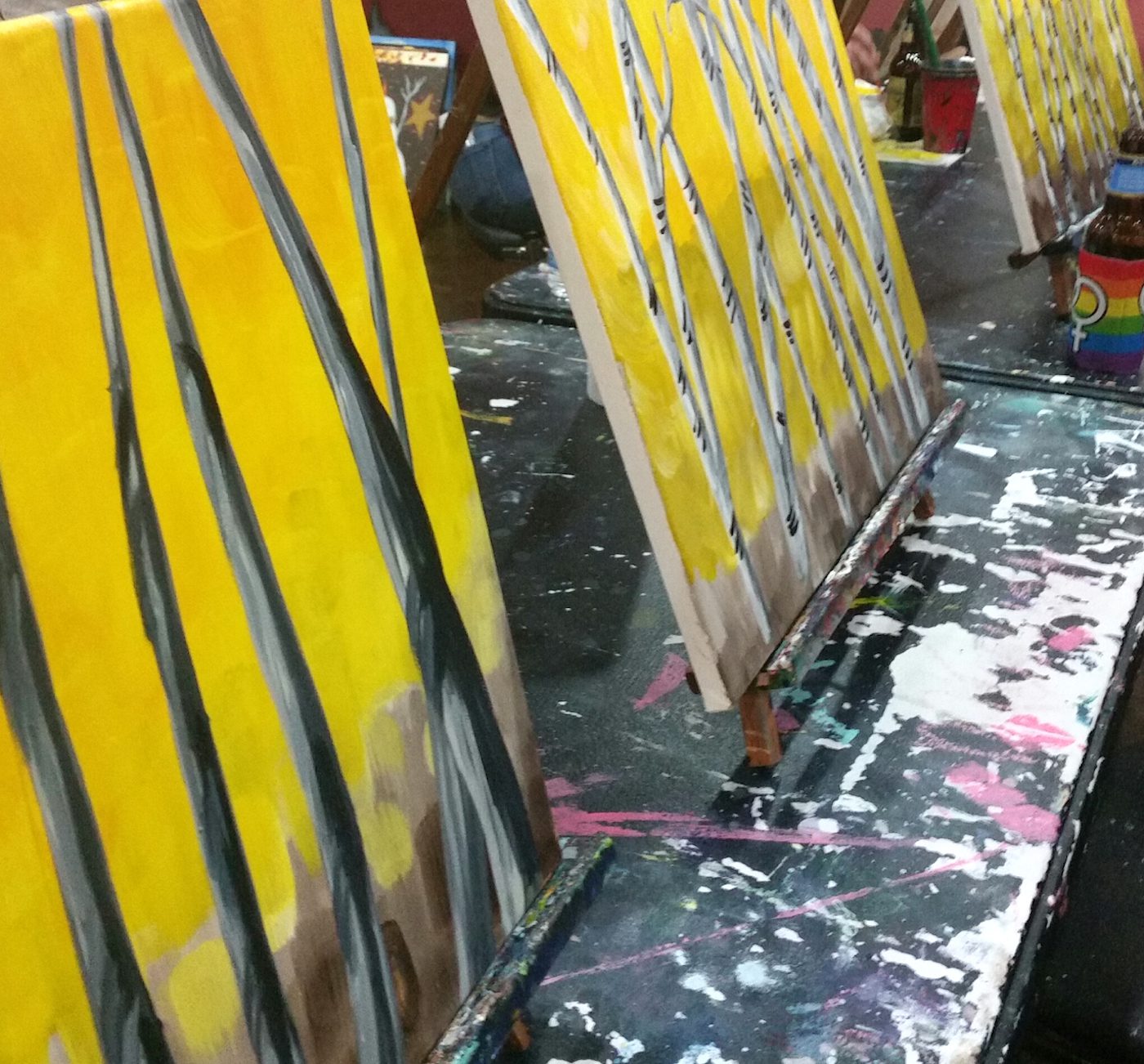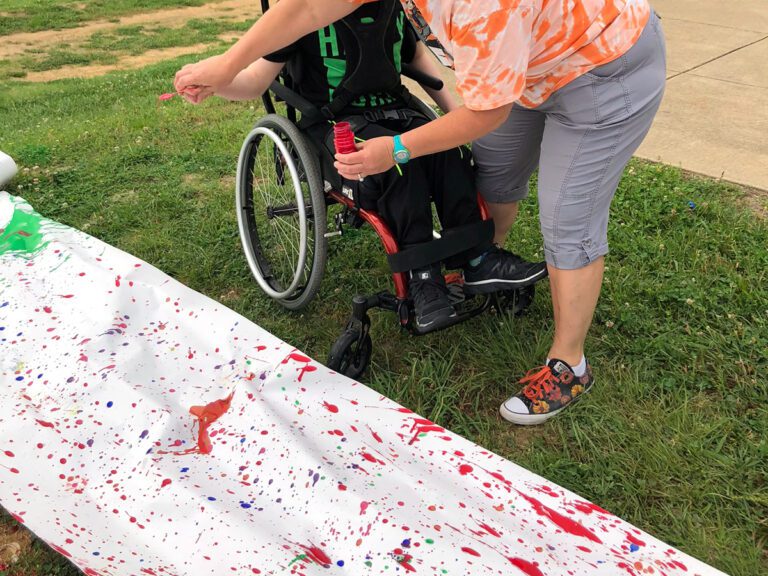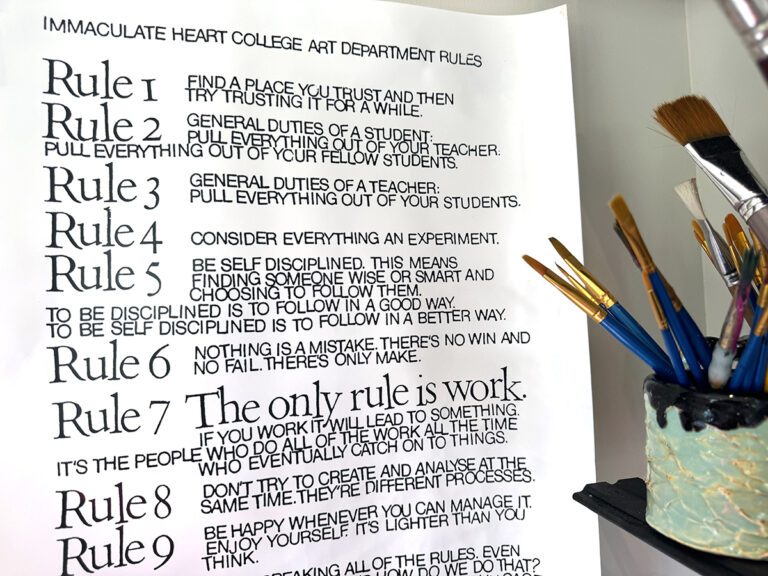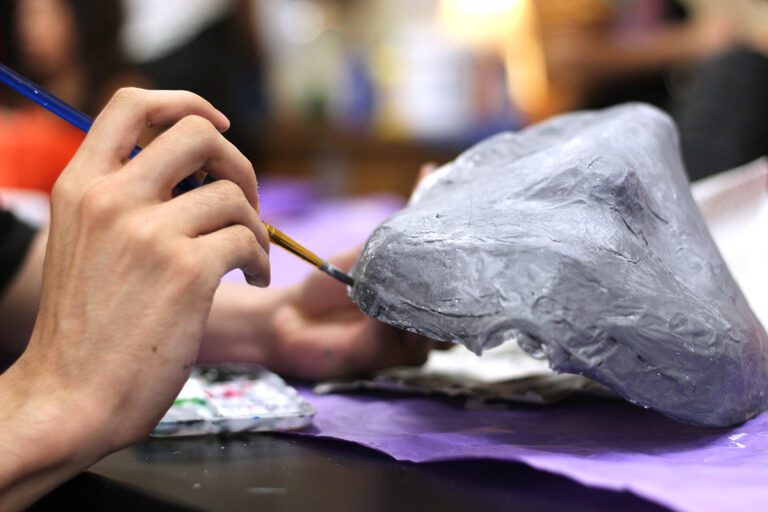Paint and Sip parties have never been more popular. It seems like every time we log in to Facebook, we see images of friends and acquaintances proudly holding their latest masterpieces. What should art teachers, who value creativity, make of these events where everyone ends up with an identical work? To find out, I went to a Paint and Sip party with friends. I ended up reflecting on my own teaching practice as much as I did on my painting. Here’s what I learned.
Class Begins
The first thing I noticed about my class was the atmosphere. It was relaxed and fun, filled with people looking forward to spending time with friends. My canvas was ready for me when I arrived along with my paint and brushes. I saw why so many people enjoy this type of class. It’s like having creativity catered. Yes, the work being painted in these parties lacks the originality to make it true art, but it’s not too much different than activities that happen in art classrooms every day. In fact, many art teachers use directional activities that are very similar to what happened at my party. Just google “birch tree art lesson.”
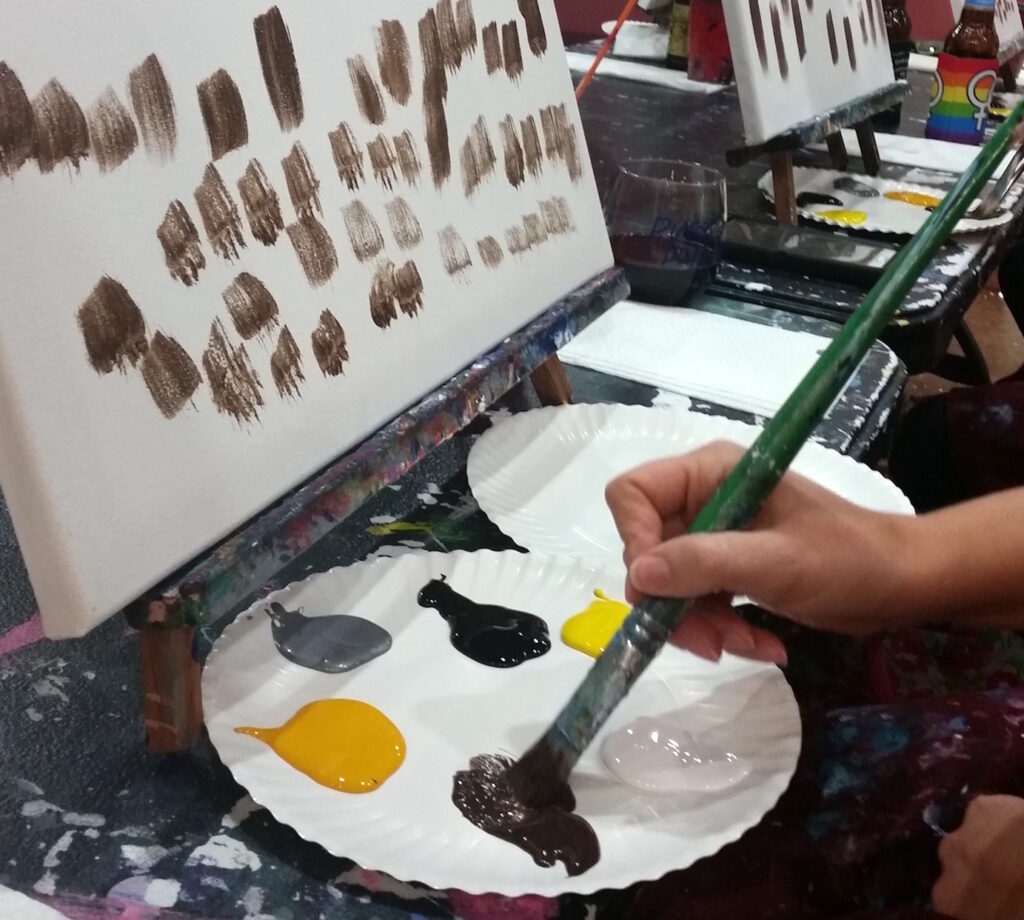
We started our paintings with the background. The instructor told us to select big brushes and make choppy strokes with the brown paint on our palette. This was strange for me because I wasn’t sure how what we were doing fit into the final painting. It wasn’t a good feeling. I do the same thing to my students, I realized, with the intent of build interest or anticipation. When I don’t provide my students the full picture, maybe I’m just building discomfort.
Next, we added white paint over the wet brown paint. I had a painting instructor in school who was adamantly opposed to mixing on the canvas, so I felt a bit like I was breaking the law, but I ignored the feeling and kept making choppy brush strokes with my big brush. Next, we added warm and cool yellow to finish the background and took a break to let the paint dry. Everyone talked and laughed and continued to have a good time. Then we started working on adding trees in the foreground and the mood changed.
Trees and Anxiety
Our instructor gave specific directions to help the class replicate the number and placement of birch trees in the example painting. I was surprised at how stressful this stage in the painting was for many of the painters.
“Where does it go?”
“Mine’s not right.”
“Show me again.”
It was obvious that my classmates were uncomfortable with trying to replicate the trees from the example. The fear of failing is very real, even for adults, when the task is to recreate an example. Everyone in the class was comparing their work to the example and worrying that it fell short. Do we do the same thing to our students when we show them a model and ask them to replicate it?
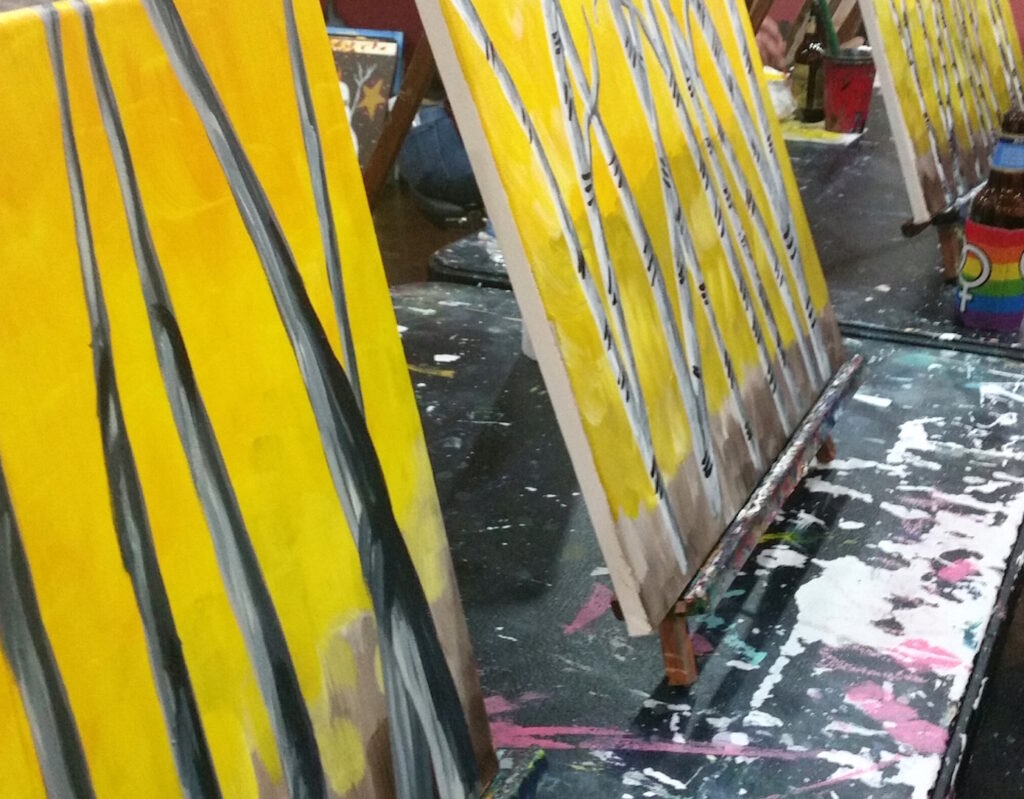
“Take a sip of your drink and keep going,” our instructor told the class, not unkindly. We did, adding value and the iconic birch tree black lines. Everyone in the class ended up with paintings that looked like a close variation of the example even though we had multiple opportunities to try our own ideas. Throughout the painting process, we were given examples of how we could be creative.
“Feel free to change up the colors.”
“Add as many trees as you want.”
“Paint a bird on one of your trees.”
No one did any of these things. Directional activities don’t support creativity, they reinforce following directions. When everyone is making the same thing, it’s a risk to try something different. Students need opportunities to experiment with technique before applying it and time to think through ideas. This is true whether the students are 5, 15, or 50. It’s difficult to provide these opportunities and guide a class through the stages of making an artwork in a limited amount of time.
The Takeaway
Paint and Sip parties might be low on creativity, but they are fun and social. People enjoy them because it feels good to hang out with friends and make something. They are great for adults who want a little art-related fun. However, directional activities don’t support creativity and trying to replicate an instructor’s example can be stressful. When given a prototype, both adults and kids just want to “make it right.”
The big thing I took away from my Paint and Sip adventure wasn’t my painting, it was a new understanding about how directional activities and fear are related. Following the steps is fine for casual adult classes, but as teachers, we owe our students more. Let’s get rid of the teacher example in our art rooms and work to build students who are fearlessly creative.
If you’re looking for ways to bring more creativity into your classroom, don’t miss the AOE course Creativity in Crisis. You’ll learn how to create a culture of creativity in your art room using the nine principles of creativity and how to build an environment of trust and openness within the studio to nurture individual creative potential.
In addition, the PRO Learning Packs Creativity Exercises for Every Level and Creating with Unexpected Materials are also full of wonderful ideas.
What are your feelings about Paint and Sip parties?
Have you ever attended one? Do you teach them? We’d love to know your thoughts.
Magazine articles and podcasts are opinions of professional education contributors and do not necessarily represent the position of the Art of Education University (AOEU) or its academic offerings. Contributors use terms in the way they are most often talked about in the scope of their educational experiences.
